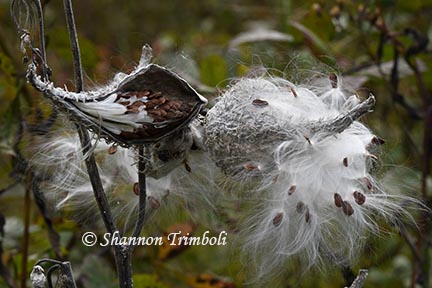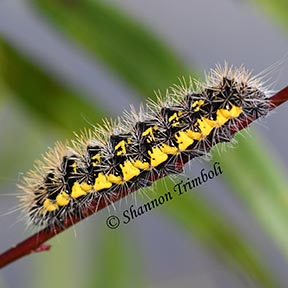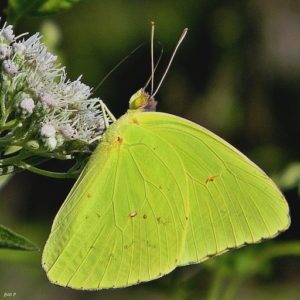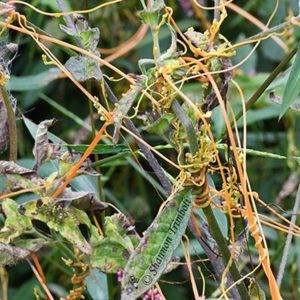Fall is my favorite time of year. I love the cooler, less humid weather, the distinctive fall smell in the early morning, the beautiful fall flowers, the busy actions of the butterflies and bees as they prepare for whatever winter looks like for them, and the transition from our summer bird species to our winter bird species. Like many others, I also enjoy the beautiful fall foliage, although the fall leaves were kind of lack luster in my neck of the woods.

We had some pretty individual trees, but many of our trees just dropped their leaves. I’ve seen better years and I’ve seen worse years. However, I’ve heard reports of spectacular fall foliage in other areas. Hopefully, many of you got to experience the spectacular side of things. Despite the less than phenomenal fall foliage, I still made lots of fun nature-related discoveries while exploring our property over the past month and I wanted to share some of them with you.
The milkweeds and many of our other summer and early fall wildflowers have gone to seed and are distributing their seeds. The fluffy, white tufts on the milkweed seeds serve an important role because they allow the seeds to float in the wind and spread to new locations. Given how windy it has been this weekend, I’m sure the milkweed seeds in my fields have been spread to all kinds of new locations.

We have a small pond on our property and discovered this gorgeous caterpillar and a few of its siblings munching on some of the willows around the pond. With a little research, I was able to identify it as a “smartweed caterpillar” or the caterpillar of the smeared dagger moth (Acronicta oblinita). Despite its common name, the smartweed caterpillar eats much more than just smartweeds. It also commonly eats willows, apples, elms, grasses, and many other plants. The bright yellow stripe screams “Stay away! You really don’t want to mess with me!” While the spines back up the warning of the stripe.

Cloudless sulphur butterflies are one of our migratory butterflies. I watched them migrate through southcentral KY for most of October. A couple of weeks ago we had a crazy morning that must have represented the peak of migration. It was by far the most cloudless sulphur butterflies I’d seen all season! Every time I looked up there were multiple bright yellow butterflies flying by in a generally southward pattern. Very few of them landed, and even those didn’t stay still for long, so I wasn’t able to get a picture of my own. I’ve only seen a few since that day.

While wandering our fields not long ago, I stumbled across a bright orange mass of dodder. Dodder (Cuscuta sp.) is a parasitic genus of vines. The vines are really thin and, in some ways, look like someone squirted a can of pumpkin orange silly string over top of the plants until you notice that it is twining around the plants. We have both native and non-native species, but the exact species can be difficult to identify, especially without flowers. Dodder is often considered an agricultural pest, but it is also a fascinating example of just how complex and interesting nature can be. In 2006, researchers found that dodder uses volatile chemicals to help detect and grow towards its preferred host plants. Behaviorally, this would be similar to us smelling something yummy and following our nose to the kitchen – but we’re talking about a plant not an animal! Nature never ceases to amaze me! Let me know what interesting nature-related discoveries you’ve made in your yards and communities this month.

Backyard Ecology: Exploring Nature in Your Backyard
Nature isn’t just “out there.” It’s all around us, including right outside our doors. Hi, my name is Shannon Trimboli, and I am the host of Backyard Ecology. I live in southcentral Kentucky and am a wildlife biologist, educator, author, beekeeper, and owner of a nursery specializing in plants for pollinators and wildlife conservation. I invite you to join me as we ignite our curiosity and natural wonder, explore our yards and communities, and improve our local pollinator and wildlife habitat. Learn more or subscribe to my email list at www.backyardecology.net.

Leave a Reply to Deborah Rosenthal Cancel reply